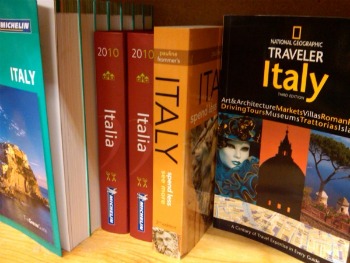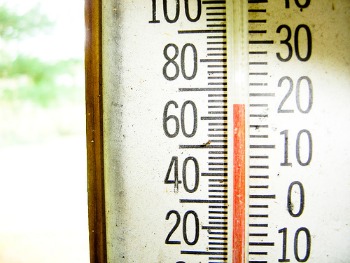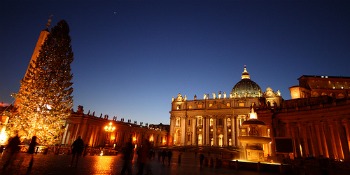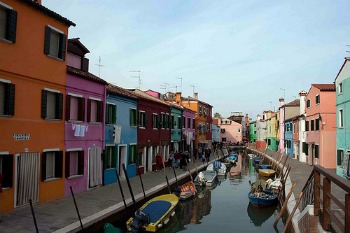 You can read about how Italy is a year-round tourist destination and when the high and low seasons for Italy are, but many people will still come out on the other side of that information with a simple question: “Okay, but when is the best time to go to Italy?”
You can read about how Italy is a year-round tourist destination and when the high and low seasons for Italy are, but many people will still come out on the other side of that information with a simple question: “Okay, but when is the best time to go to Italy?”
Here’s the thing – your version of “best” and mine may be very different things. Instead of making some unfounded pronouncement like, “The best time to be in Italy is May 7th,” therefore, I’m going to give you the information you’ll need to make your own decision about when is best for your trip to Italy.
A Digression…
I know, I don’t make this easy – I ask you to actually read stuff and make up your own mind. But it’s for a good cause, really.The cause? Your vacation – emphasis on your.
The more control you take of your trip, the more likely it is to be the ideal trip for you rather than the ideal trip for the person who told you you must go to X, see Y, and eat Z. I’m here to point you in the right direction if you need it, but I’m not the travel dictatorial sort.
(For more evidence of this, see my tips on such things as planning the best Italy itinerary or budgeting for an Italy trip. I’m full of “it depends” answers there, too.)
Back on Track…
Let’s look at the things that you’ll likely need to take into consideration to figure out what, for you, constitutes the best time to visit Italy. The way I see it, there are three big areas to think about when you’re figuring out the timing of a trip just about anywhere, including Italy – and they are budget, weather, and holidays.
 Some times of year are more expensive in Italy than others, and this mainly goes for big-ticket items like airfare and accommodation – things that can have a big impact on your overall travel budget. The most expensive times to travel in Italy tend to be:
Some times of year are more expensive in Italy than others, and this mainly goes for big-ticket items like airfare and accommodation – things that can have a big impact on your overall travel budget. The most expensive times to travel in Italy tend to be:
Aside from these seasons and major holidays, keep in mind that some places have local festivals that are big enough as to draw huge crowds – meaning not only do prices go up accordingly, availability plummets unless you book well in advance. I’m talking here about things like Venice’s Carnival, Siena’s Palio, or Perugia’s chocolate festival. I’ll talk more about the merits of targeting or avoiding holidays further down this page, but for the purposes of this section it’s important to note that some holidays and festivals are big enough to impact the cost of things like hotels and hostels.
>> More on how to budget for travel in Italy and visiting Italy on a budget
 For some people, a vacation isn’t a vacation unless it means sunny weather. If that’s your top consideration, then your target months are generally going to be May through September – yes, exactly the expensive high season I mentioned above.
For some people, a vacation isn’t a vacation unless it means sunny weather. If that’s your top consideration, then your target months are generally going to be May through September – yes, exactly the expensive high season I mentioned above.
Hey, it’s the most popular time to visit Italy for a reason.
On the other end of the weather spectrum is winter, which can mean ho-hum rain or pretty snow-covered hillsides (depending on where you are). Skiers may be more interested in winter visits to one of Italy’s many ski resorts, and budget travelers may be keen to take advantage of the much-lower prices available during the winter – but it can be quite cold and wet, so it’s not necessarily the ideal time for things like hiking in Italy or taking long, romantic strolls through town.
When you’re planning an Italy trip that’s months if not years in the future, it’s impossible to get an accurate forecast of what the weather will be like when you’re finally on the ground. You can look at seasonal averages for the various cities on your itinerary (keeping in mind that the weather in Milan is quite different than the weather in Palermo on any given day), paying special attention to data from more recent years, but that’s the best you’ll be able to do for long-range advance planning.
Once your trip is booked, I’d recommend checking a current forecast for the places you’ll visit in the week or so before you leave so you know better how to pack and what to expect weather-wise. One of my favorites is an Italian site, meteo.it, but any weather site with a selection of Italian cities will do.
>> More about the weather in Italy
 I mentioned holidays above in the “budget” category, because sometimes a big holiday can mean higher prices on things like airfare or accommodation, but if budget isn’t your top consideration that doesn’t mean you should ignore the calendar of holidays in Italy. There are pros and cons to visiting a place when it’s in the middle of a celebration, so it’s a good idea to see whether the places you’ll go are in the midst of any kind of festival during your stay.
I mentioned holidays above in the “budget” category, because sometimes a big holiday can mean higher prices on things like airfare or accommodation, but if budget isn’t your top consideration that doesn’t mean you should ignore the calendar of holidays in Italy. There are pros and cons to visiting a place when it’s in the middle of a celebration, so it’s a good idea to see whether the places you’ll go are in the midst of any kind of festival during your stay.
On one hand, there’s absolutely nothing like seeing a place all decked out in its celebratory finery – especially if the festival is a local one rather than something put on simply to attract tourists. You’re already there on vacation, and when you’re getting caught up in a festival it’s impossible to feel like you’re anywhere but on vacation. Italy’s festivals (large and small) tend to involve music, fireworks, parades, and – here’s where things can get good – food. Even the festivals that aren’t food-related to begin with always end up having an important food component, and for many travelers that’s a major selling point.
On the other hand, some festivals and holidays draw large enough crowds that hotel and hostel prices skyrocket as the number of vacant rooms dwindles. When fireworks are involved (as they so often are), your early bed time or the fact that your hotel room overlooks the main square aren’t going to go well with the late-night revelries. In other places, holidays may mean early closing times (or entire closed days) on everything from restaurants and shops to the very attractions you’ve come to see. Planning to spend only one day in Florence and then realizing once you’re there that it’s Good Friday and lots of stuff is closed isn’t going to make you a happy traveler.
Thankfully, in most cases all it takes is a little bit of research to find out what’s happening in the various towns and cities on your itinerary before you set your trip’s agenda in stone. There may well be smaller local festivals that you won’t know about until you get there (it seems like there’s always something being celebrated in Italy), but it’s the big ones that you really need to know about in advance.
>> More about the festivals and holidays in Italy
 I know some of you are still looking for some indication of that “perfect” time when it’s best to go to Italy so you don’t have to do all this (gasp!) reading. If that’s you, here’s as much as I’m going to give you – shoulder seasons.
I know some of you are still looking for some indication of that “perfect” time when it’s best to go to Italy so you don’t have to do all this (gasp!) reading. If that’s you, here’s as much as I’m going to give you – shoulder seasons.
The in-between times in Italy, the “shoulder seasons” between the high and low seasons, typically offer the best combination of good weather and reasonable prices. Because the high season has grown a bit beyond its summer boundaries, the shoulder seasons are shorter than they used to be – but I’d call late March through early May and late September through early November Italy’s shoulder seasons.
The great thing about shoulder seasons in Italy is that the weather is usually predominantly nice and because it’s not the high season you don’t run into the high prices on airfare or accommodation. As a bonus, you also don’t tend to get stuck in the middle of huge crowds, either.
Shoulder season weather in Italy can be unpredictable, however, so if weather is a bigger consideration for you than budget I’d stick closer to the borders of the high season (or, heck, just go in the high season). You may luck out with an unseasonably warm March visit, and you may also get rained on quite a bit. It’s the risk you take with a shoulder season trip, but if the weather cooperates for at least most of the time the payoff can be fantastic.
>> More about spring in Italy and fall in Italy
photos, top to bottom, by: Jessica Spiegel (and may not be used without permission), Francis Bourgouin, trekkyandy, Hello, I am Bruce, PAVDW